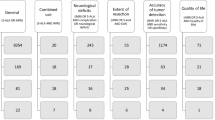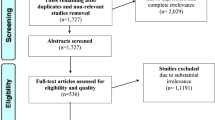Abstract
Background
Only few data are available on the specific topic of 5-aminolevulinic acid (5-ALA) guided surgery of high-grade gliomas (HGG) located in eloquent areas. Studies focusing specifically on the post-operative clinical outcome of such patients are yet not available, and it has not been so far explored whether such approach could be more suitable for some particular subgroups of patients.
Methods
Patients affected by HGG in eloquent areas who underwent surgery assisted by 5-ALA fluorescence and intra-operative monitoring were prospectively recruited in our Department between June 2011 and August 2012. Resection rate was reported as complete resection of enhancing tumor (CRET), gross total resection (GTR) >98 % and GTR > 90 %. Clinical outcome was evaluated at 7, 30, and 90 days after surgery.
Results
Thirty-one patients were enrolled. Resection was complete (CRET) in 74 % of patients. Tumor removal was stopped to avoid neurological impairment in 26 % of cases. GTR > 98 % and GTR > 90 % was achieved in 93 % and 100 % of cases, respectively. First surgery and awake surgery had a CRET rate of 80 % and 83 %, respectively. Even though at the first-week assessment 64 % of patients presented neurological impairment, there was a 3 % rate of severe morbidity at the 90th day assessment. Newly diagnosed patients had a significantly lower morbidity (0 %) and post-operative higher median KPS. Both pre-operative neurological condition and improvement after corticosteroids resulted significantly predictive of post-operative functional outcome.
Conclusions
5-ALA surgery assisted by functional mapping makes high HGG resection in eloquent areas feasible , through a reasonable rate of late morbidity. This emerges even more remarkably for selected patients.


Similar content being viewed by others
References
Lacroix M, Abi-Said D, Fourney DR, Gokaslan ZL, Shi W, DeMonte F, Lang FF, McCutcheon IE, Hassenbusch SJ, Holland E, Hess K, Michael C, Miller D, Sawaya R (2001) A multivariate analysis of 416 patients with glioblastoma multiforme: prognosis, extent of resection, and survival. J Neurosurg 95:190–198
Sanai N, Berger MS (2008) Glioma extent of resection and its impact on patient outcome. Neurosurgery 62:753–764
Stummer W, Novotny A, Stepp H, Goetz C, Bise K, Reulen HJ (2000) Fluorescence-guided resection of glioblastoma multiforme by using 5-aminolevulinic acid-induced porphyrins: a prospective study in 52 consecutive patients. J Neurosurg 93:1003–1013
Senft C, Forster MT, Bink A, Mittelbronn M, Franz K, Seifert V, Szelényi A (2012) Optimizing the extent of resection in eloquently located gliomas by combining intraoperative MRI guidance with intraoperative neurophysiological monitoring. J Neurooncol 109(1):81–90. doi:10.1007/s11060-012-0864-x. Epub 2012 Apr 17
Idoate MA, Díez Valle R, Echeveste J, Tejada S (2011) Pathological characterization of the glioblastoma border as shown during surgery using 5-aminolevulinic acid-induced fluorescence. Neuropathology 31(6):575–582. doi:10.1111/j.1440-1789.2011.01202.x. Epub 2011 Mar 1
Stummer W, Pichlmeier U, Meinel T, Wiestler OD, Zanella F, Reulen HJ (2006) Fluorescence-guided surgery with 5-aminolevulinic acid for resection of malignant glioma: a randomized controlled multicentre phase III trial. Lancet Oncol 7:392–401
Stummer W, Reulen HJ, Meinel T, Pichlmeier U, Schumacher W, Tonn JC, Rohde V, Oppel F, Turowski B, Woiciechowsky C, Franz K, Pietsch T, ALA-Glioma Study Group (2008) Extent of resection and survival in glioblastoma multiforme: identification of and adjustment for bias. Neurosurgery 62:564–576
McGirt MJ, Mukherjee D, Chaichana KL, Than KD, Weingart JD, Quinones-Hinojosa A (2009) Association of surgically acquired motor and language deficits on overall survival after resection of glioblastoma multiforme. Neurosurgery 65(3):463–469, discussion 469–70
Sawaya R, Hammoud M, Schoppa D, Hess KR, Wu SZ, Shi WM, Wildrick DM (1998) Neurosurgical outcomes in a modern series of 400 craniotomies for treatment of parenchymal tumors. Neurosurgery 42(5):1044–1055, discussion 1055–6
Schucht P, Beck J, Abu-Isa J, Andereggen L, Murek M, Seidel K, Stieglitz L, Raabe A (2012) Gross total resection rates in contemporary glioblastoma surgery: results of an institutional protocol combining 5-ALA intraoperative fluorescence imaging and brain mapping. Neurosurgery. doi:10.1227/NEU.0b013e31826d1e6b
Duffau H, Capelle L, Sichez JP, Faillot T, Abdennour L, Law Koune JD, Dadoun S, Bitar A, Arthuis F, Van Effenterre R, Fohanno D (1999) Intraoperative direct electrical stimulations of the central nervous system: the Salpêtrière experience with 60 patients. Acta Neurochir 141:1157–1167
Cote R, Battista RN, Wolfson C, Boucher J, Adam J, Hachinski V (1989) The Canadian neurological scale: validation and reliability assessment. Neurology 39:638–643
Rapp B (ed) (2001) A handbook of cognitive neuropsychology what deficits reveal about the human mind/brain. Psychology Press, Philadelphia
Karnofsky DA, Burchenal JH (1949) The clinical evaluation of chemotherapeutic agents in cancer. In: MacLeod CM (ed) Evaluation of chemotherapeutic agents. Columbia University Press, New York, pp 191–205
Butowski N, Lamborn KR, Berger MS, Prados MD, Chang SM (2007) Historical controls for phase II surgically based trials requiring gross total resection of glioblastoma multiforme. J Neurooncol 85(1):87–94
Vogelbaum MA, Jost S, Aghi MK, Heimberger AB, Sampson JH, Wen PY, Macdonald DR, Van den Bent MJ, Chang SM (2012) Application of novel response/progression measures for surgically delivered therapies for gliomas: Response assessment in neuro-oncology (RANO) working group. Neurosurgery 70(1):234–243, discussion 243–4
Díez Valle R, Tejada Solis S, Idoate Gastearena MA, García de Eulate R, Domínguez Echávarri P, Aristu Mendiroz J (2011) Surgery guided by 5-aminolevulinic fluorescence in glioblastoma: volumetric analysis of extent of resection in single-center experience. J Neurooncol 102(1):105–113
Feigl GC, Ritz R, Moraes M, Klein J, Ramina K, Gharabaghi A, Krischek B, Danz S, Bornemann A, Liebsch M, Tatagiba MS (2010) Resection of malignant brain tumors in eloquent cortical areas: a new multimodal approach combining 5-aminolevulinic acid and intraoperative monitoring. J Neurosurg 113:352–357
De Witt Hamer PC, Robles SG, Zwinderman AH, Duffau H, Berger MS (2012) Impact of intraoperative stimulation brain mapping on glioma surgery outcome: a meta-analysis. J Clin Oncol 30(20):2559–2565
Duffau H, Capelle L, Denvil D, Sichez N, Gatignol P, Taillandier L, Lopes M, Mitchell MC, Roche S, Muller JC, Bitar A, Sichez JP, van Effenterre R (2003) Usefulness of intraoperative electrical subcortical mapping during surgery for low-grade gliomas located within eloquent brain regions: functional results in a consecutive series of 103 patients. J Neurosurg 98:764–778
Duffau H, Sichez JP, Lehéricy S (2000) Intraoperative unmasking of brain redundant motor sites during resection of a precentral angioma. Evidence using direct cortical stimulations. Ann Neurol 47:132–135
Conflict of interest
None.
Author information
Authors and Affiliations
Corresponding author
Additional information
Comment
Della Puppa and co-workers combine two modern techniques for malignant glioma surgery, intra-operative mapping/monitoring, and fluorescence-guidance with ALA (Gliolan®). They demonstrate that given modern methods for identifying tumor intra-operatively, function limits resection. Combining both techniques will result in a high rate of complete resections of contrast-enhancing tumors even in a population of patients with gliomas in critical brain areas, with acceptable temporary morbidity. Surgery with methods for resection optimization (ALA, intra-op MRI or a combination) as well as methods for maintaining function should be considered standard for these patients, where there is often a small margin between benefits and pitfalls from what neurosurgeons are doing and safe maximal resection is the goal.
W Stummer
Münster, Germany
No funding was received for both this study and 5-ALA supply
Rights and permissions
About this article
Cite this article
Della Puppa, A., De Pellegrin, S., d’Avella, E. et al. 5-aminolevulinic acid (5-ALA) fluorescence guided surgery of high-grade gliomas in eloquent areas assisted by functional mapping. Our experience and review of the literature. Acta Neurochir 155, 965–972 (2013). https://doi.org/10.1007/s00701-013-1660-x
Received:
Accepted:
Published:
Issue Date:
DOI: https://doi.org/10.1007/s00701-013-1660-x




